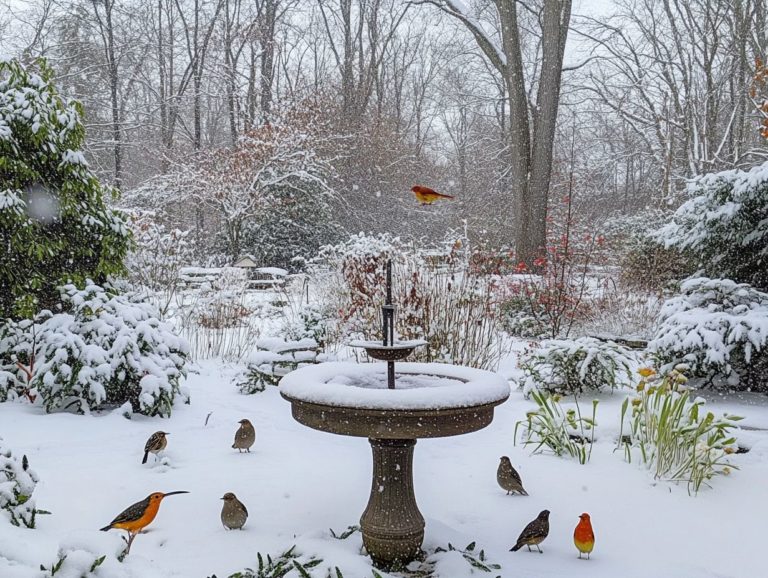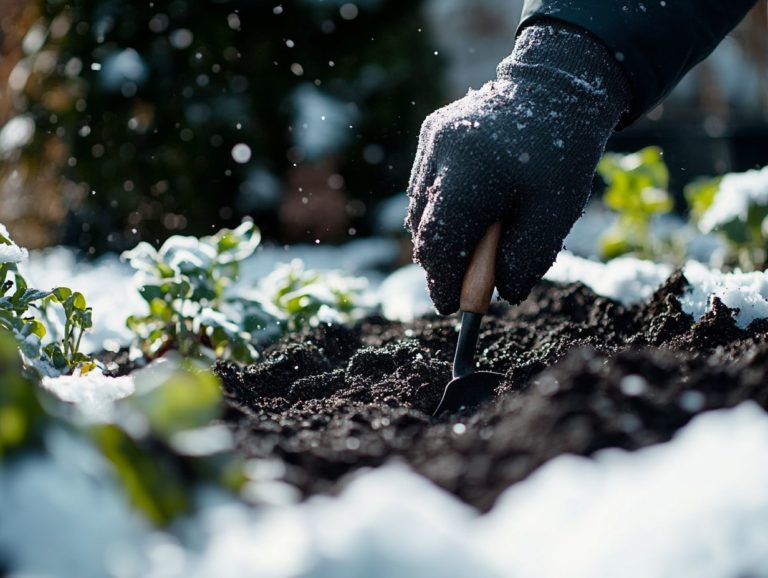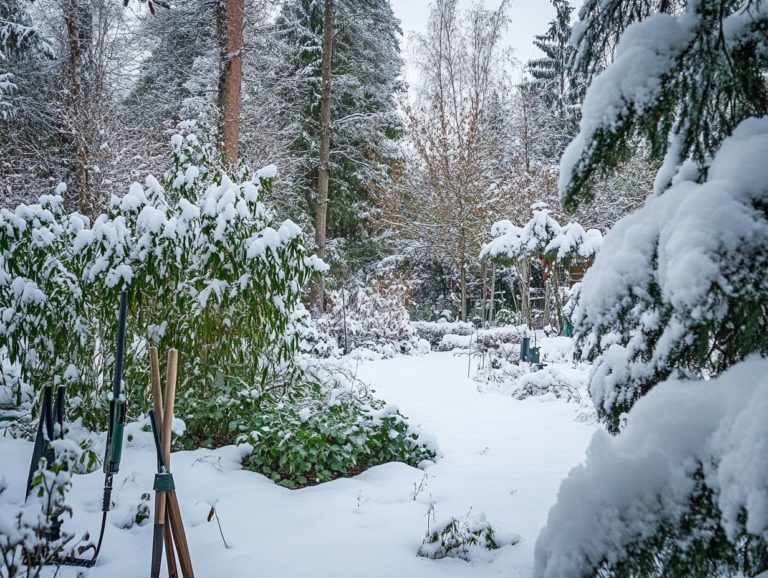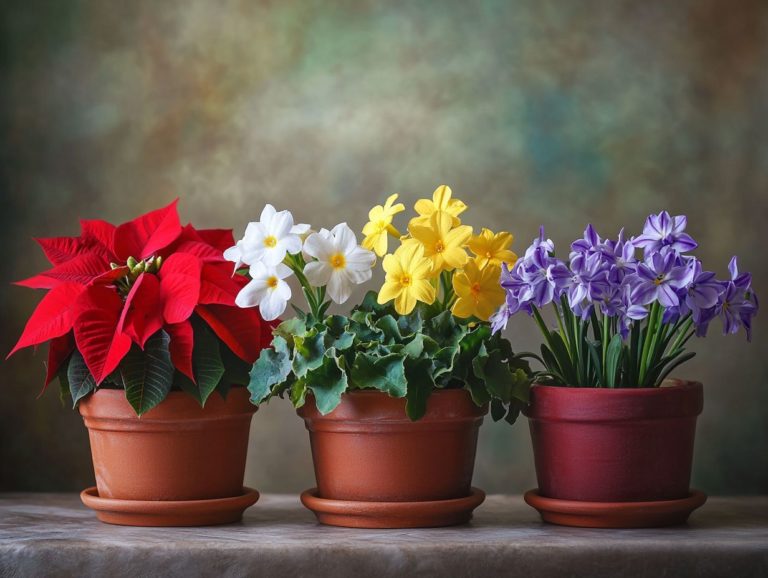Spring Awakening: What to Plant in Cold Climates
Spring heralds a season of renewal. For those gardening in colder climates, this is a unique opportunity to fully embrace the potential this time of year offers.
Understanding your local climate and growing season is crucial in choosing the right plants that will thrive even in cooler conditions.
This guide equips you with everything necessary to prepare your garden for a vibrant spring. You’ll find essential tips for successful planting, common pitfalls to sidestep, and effective strategies for nurturing a flourishing growing season.
Contents
- Key Takeaways:
- Know Your Climate and Growing Season
- Choosing the Right Plants for Cold Climates
- Preparing Your Garden for Spring Planting
- Common Mistakes to Avoid
- Tips for Successful Spring Planting
- Frequently Asked Questions
- What are some good plants to plant during spring in cold climates?
- When is the best time to start planting in cold climates?
- Can I still plant vegetables during spring in cold climates?
- Tips for Growing Plants in Cold Climates
- Mistakes to Avoid When Planting in Cold Climates
- Perfect Flowers for a Spring Garden
Key Takeaways:
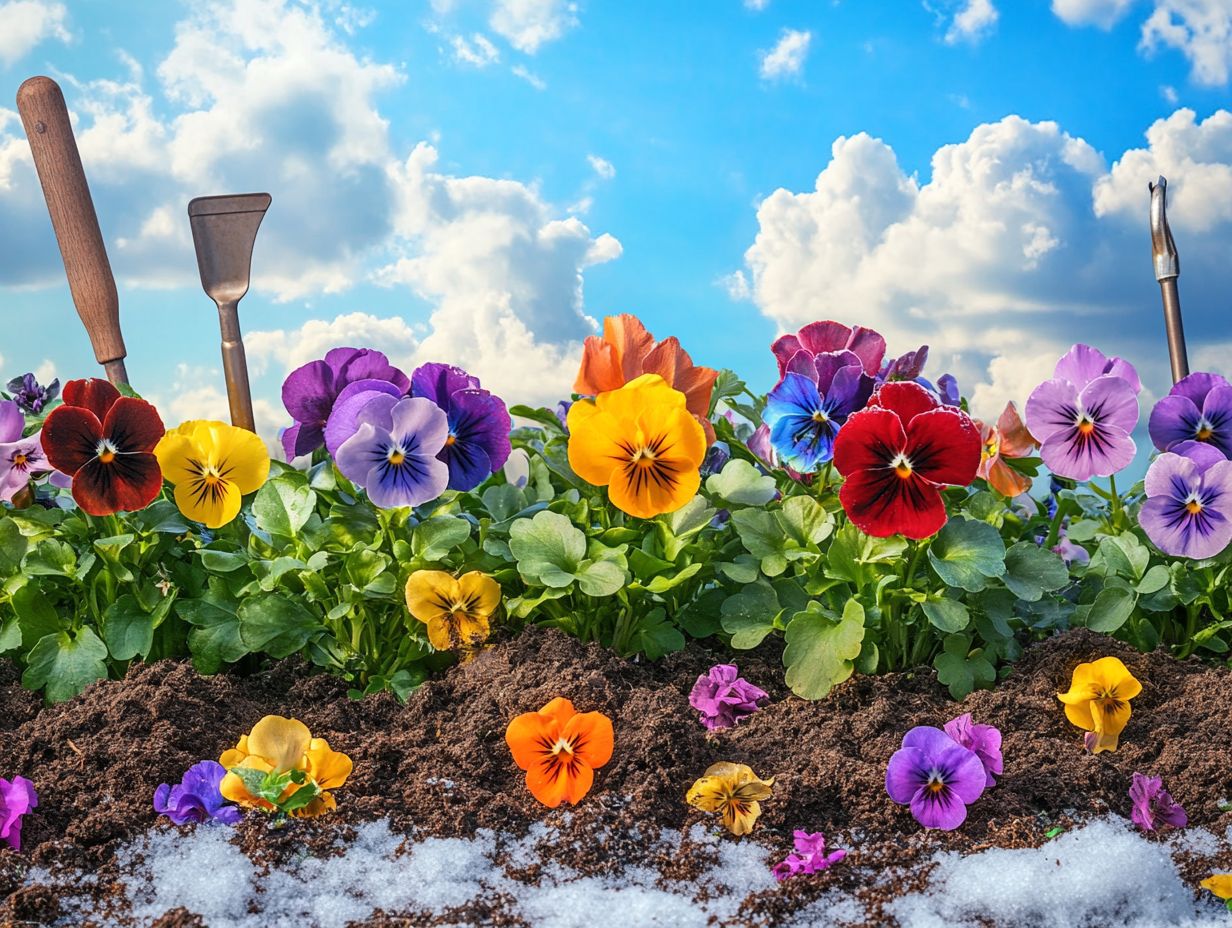
- Understanding your climate and growing season is crucial for successful gardening in cold climates.
- Choose plants suitable for your plant hardiness zone, and consider early spring varieties for optimal growth.
- Proper soil preparation and timing are key factors for a successful spring planting season in cold climates.
Know Your Climate and Growing Season
Knowing your climate and growing season is essential for successful gardening in the Pacific Northwest. The unique weather patterns dictate when to care for your plants, select seeds, and maintain your garden.
As spring arrives, you ll notice that temperatures can drop in the early months. This influences local flora and the growth cycles of various plants, including early bloomers and hardy perennials. This awareness equips you with the insights needed to cultivate a thriving garden throughout each phase of the seasonal growth cycle.
Choosing the Right Plants for Cold Climates
Selecting the right plants for cold climates is crucial for achieving healthy growth and vibrant vitality in your garden. By familiarizing yourself with your local plant hardiness zone, you can explore a diverse array of options, including hardy perennials, native plants, and winter blooms that are perfectly suited to endure frost and flourish even as temperatures dip.
These thoughtful selections will create stunning garden rooms and provide privacy hedges, elevating the beauty of your outdoor space.
Hardiness Zones and Plant Selection
Understanding plant hardiness zones is essential for your plant selection. These zones serve as a vital framework, allowing you to assess which species will thrive in your unique environmental conditions and helping you avoid the pitfalls of choosing the wrong plants.
Hardiness zones are primarily defined by the average annual minimum temperature, categorized into bands ranging from Zone 1 (the coldest) to Zone 13 (the warmest). This classification helps you identify the most suitable plants based on your local climate.
For example, if you re looking to incorporate perennials, daylilies are a great choice for Zones 4-9, while tropical favorites like hibiscus prefer Zones 9-11. It s crucial for you, as a plant enthusiast, to align your selections not only with your plant hardiness zone but also to consider microclimates specific local conditions that can vary from the general climate of an area soil conditions, and other local factors. This will ensure that your garden flourishes vibrantly and resiliently, ready to face the specific challenges of your environment.
Best Plants for Early Spring Planting
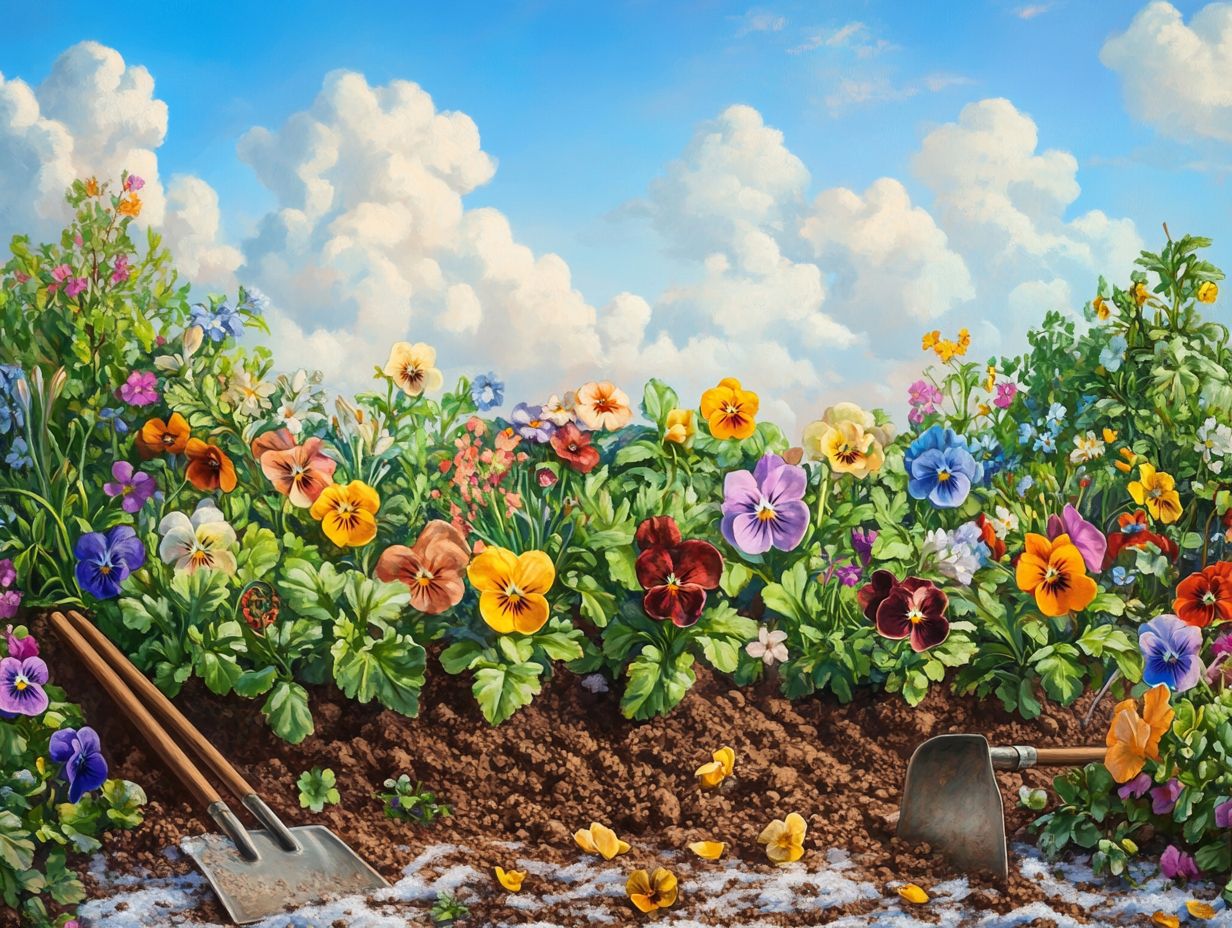
Early spring planting presents a remarkable opportunity for you to introduce a variety of plants that thrive in cooler temperatures. Consider delightful spring ephemerals (short-lived plants that bloom quickly in spring) and vibrant flowering bulbs that bloom before the frost has fully retreated. By selecting the best plants for early planting, you can ensure that your garden bursts forth with color and vibrancy, paving the way for a successful growing season!
Incorporating a diverse range of annuals, biennials (plants that take two years to complete their life cycle), and early bloomers will allow you to create a visually stunning landscape that evolves beautifully with the season. Consider options like pansies and primroses for instant pops of color, while forget-me-nots provide charming ground cover. Hardy perennials such as hellebores will add both beauty and resilience to your garden.
Understanding each plant s growth habits such as spacing, light requirements, and irrigation needs will enable you to place them optimally and provide the best care. With thoughtful selection, you can enhance your outdoor spaces, attract pollinators, and relish the beauty these hardy plants bring as winter gracefully fades away!
Preparing Your Garden for Spring Planting
Preparing your garden for spring planting entails several essential steps that will set you up for success. Begin with garden maintenance, ensuring that your space is tidy and ready for new growth.
Soil preparation is equally important! Take the time to assess its quality and make adjustments as needed. This might involve applying a compost top-dress to enhance nutrient content, a vital move for fostering robust plant development throughout the growing season. Don t forget about moisture levels; maintaining optimal conditions is key to supporting healthy root growth.
A spring inspection kickstarts your garden journey!
Soil Preparation and Maintenance
Effective soil preparation and maintenance are the cornerstones of successful gardening, directly impacting the health and productivity of your plants. Addressing nutrient requirements and enhancing soil quality through practices like compost top-dressing will cultivate robust root systems and mitigate the risks of root diseases that often arise from subpar soil conditions.
Conducting regular soil tests enables you to pinpoint deficiencies and amend your soil accordingly. Ensure that essential nutrients such as nitrogen, phosphorus, and potassium are present in sufficient quantities. Techniques like incorporating organic matter, using mulch to retain moisture, and rotating crops can significantly enhance soil structure over time.
Think of healthy soil as a vibrant ecosystem that supports everything from your vegetables to flowering plants, fostering optimal growth and resilience against pests and diseases. Ultimately, dedicating time to understanding soil health sets the stage for a flourishing garden!
Timing and Techniques for Optimal Growth
Timing and techniques for optimal growth are essential elements of effective gardening! These factors shape how well your plants establish and thrive throughout the growing season. By establishing a consistent watering schedule and implementing proper pruning methods, you can significantly enhance the health and vitality of your garden, ensuring a stunning display of blooms and lush foliage.
Understanding the right timing for sowing seeds indoors or outdoors is crucial for your crop success. For example, many gardeners wisely sow cool-weather seeds like peas and lettuce in early spring, while warm-weather varieties such as tomatoes and peppers thrive when started indoors before being transplanted after the last frost.
Regular watering, tailored to the specific needs of each plant, guarantees they receive adequate moisture, especially on those scorching summer days. Seasonal tasks like mulching not only help retain soil moisture but also suppress pesky weeds. Additionally, pruning stimulates new growth and shapes your plants beautifully.
By paying attention to these various planting techniques and seasonal responsibilities, you can cultivate a flourishing environment that supports healthy plant development, transforming your garden into a vibrant oasis!
Ready to start your spring planting journey? Get your hands dirty today and create a beautiful garden!
Common Mistakes to Avoid
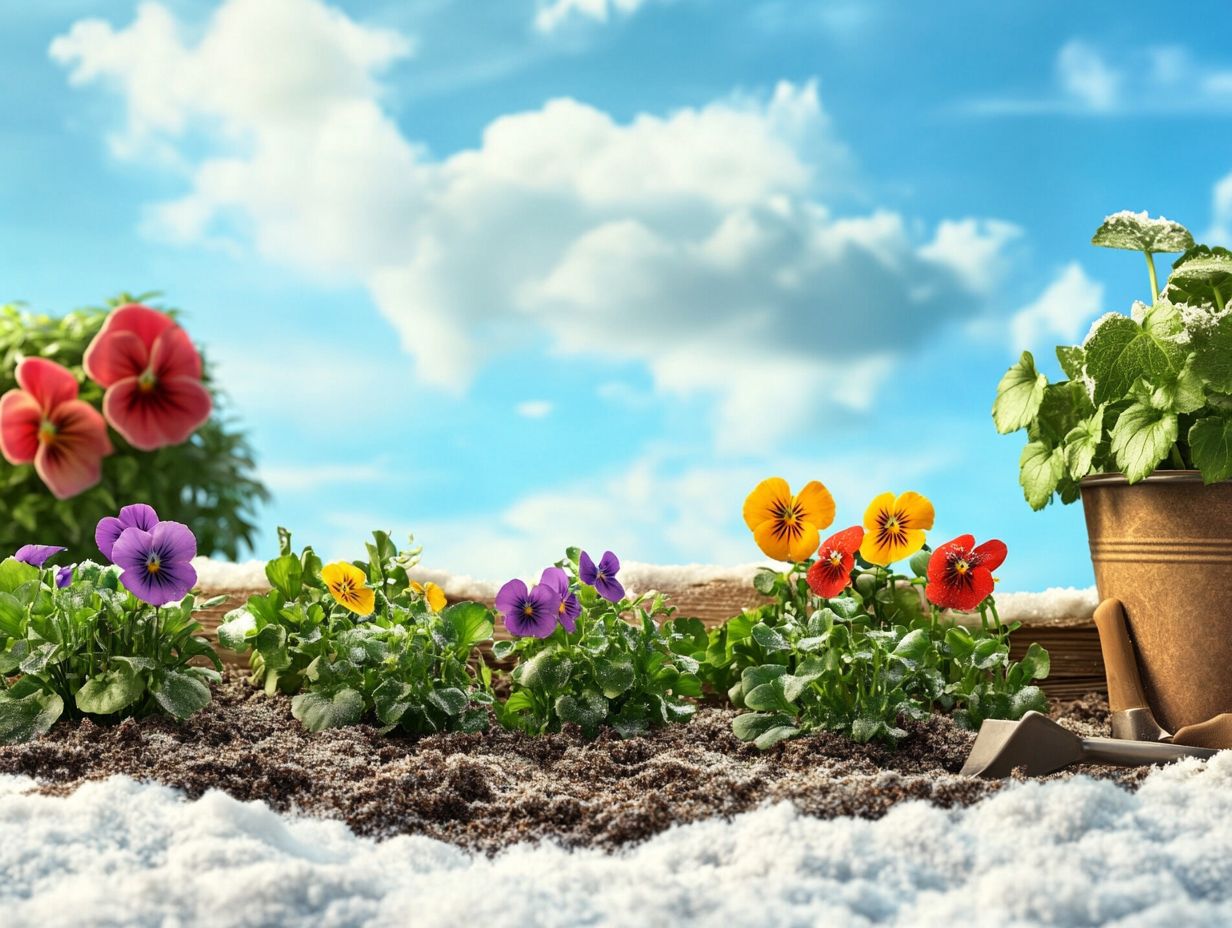
Steering clear of common mistakes can profoundly impact your journey to cultivating a successful garden. Mistakes in pest control, nutrient management, and plant positioning can seriously compromise plant development and overall health.
By staying vigilant about frequent pitfalls like nutrient burn or incorrect watering schedules you can take proactive steps to ensure your plants not only survive but truly thrive.
Issues to Watch Out for and How to Address Them
Gardening presents its own unique set of challenges. Staying vigilant about issues like pest control, root diseases, and nutrient imbalances is crucial for keeping your plants healthy. Recognizing the signs of these problems and knowing how to tackle them can help you avoid setbacks and create a healthy garden.
Pay particular attention to moisture levels; both overwatering and underwatering can create serious problems like root rot or dehydration. Regularly checking soil moisture with tools like moisture meters can help you manage your watering schedule effectively.
It’s also vital to assess the nutrient requirements of different plant species. Deficiencies can stunt growth and reduce yield. Utilizing soil tests allows you to identify nutrient levels and make the necessary adjustments with fertilizers and organic matter.
By keeping an eye on these essential factors, you can cultivate an environment where your plants truly thrive. This ultimately enhances the beauty and productivity of your garden.
Final Thoughts and Suggestions for a Successful Growing Season
Achieving a successful growing season relies on your commitment to careful planning, effective plant selection, and ongoing garden maintenance. These elements work together to cultivate vibrant vitality in your outdoor space.
Stick to best practices and keep up with seasonal tasks to create a flourishing environment that enhances both beauty and productivity.
This exciting approach goes beyond a checklist; it requires an overall picture of your local climate, soil conditions, and plant varieties. By carefully assessing each aspect from selecting the right perennials that thrive in your area to establishing a consistent watering and fertilization routine you can ensure that your efforts result in healthy plants and a bountiful harvest.
Keeping a vigilant eye on potential pests and diseases enables you to intervene promptly. This helps prevent minor issues from escalating into significant problems. As the growing season unfolds, your proactive mindset and informed strategy will lead to an abundant garden that sings with life.
Tips for Successful Spring Planting
Successful spring planting hinges on a blend of effective techniques, a keen understanding of soil quality, and a meticulously planned watering schedule. This ensures your plants establish themselves robustly.
By focusing on seasonal tasks and employing proper planting methods, you can elevate the vitality of your plants. This sets them on a trajectory for flourishing growth throughout the season.
Frequently Asked Questions
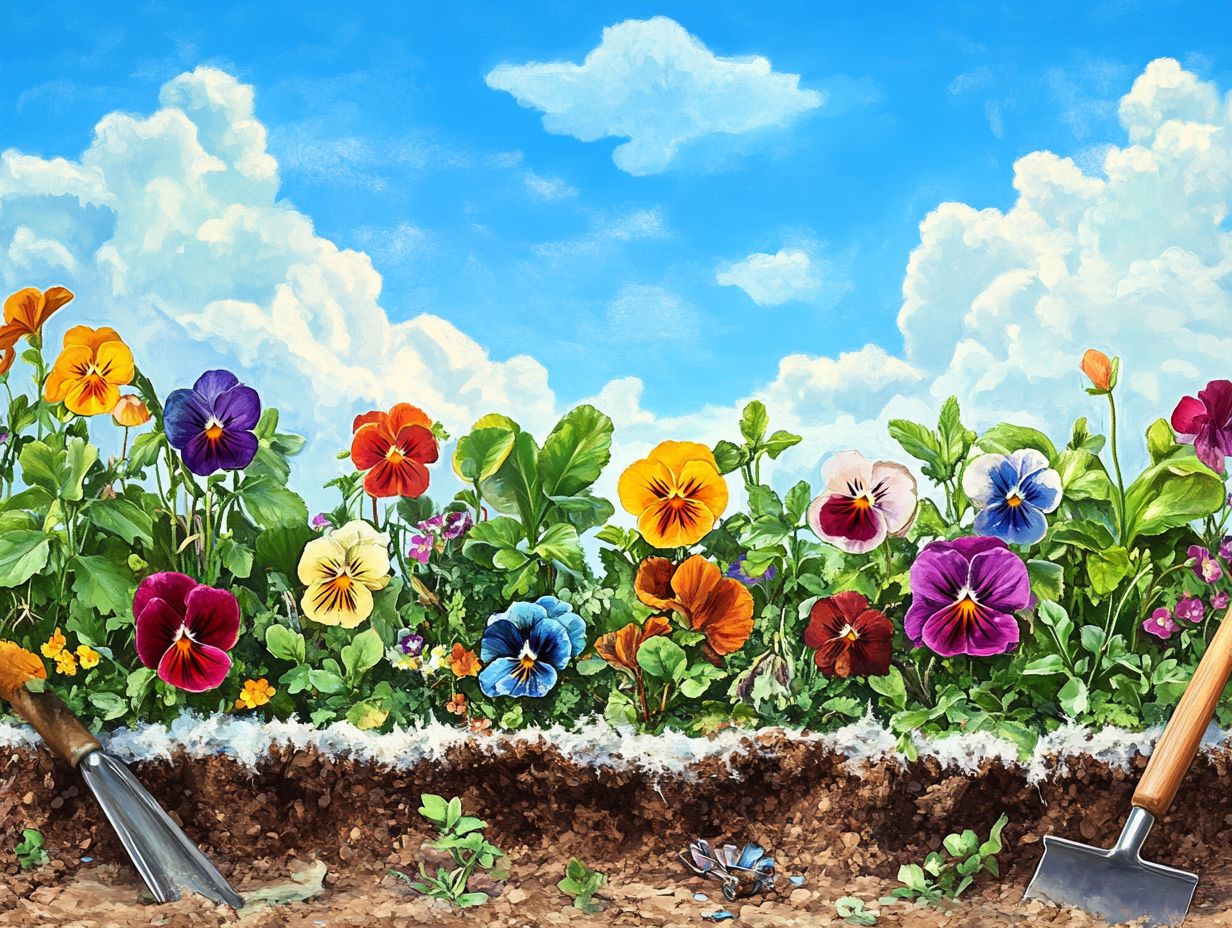
What are some good plants to plant during spring in cold climates?
Some good plants to plant during spring in cold climates include tulips, daffodils, crocuses, lilacs, and pansies.
When is the best time to start planting in cold climates?
The best time to start planting in cold climates is typically after the last frost date. This can vary depending on your specific location. It is important to wait until the soil has thawed and is workable before planting.
Can I still plant vegetables during spring in cold climates?
Yes, there are certain vegetables that can be planted during spring in cold climates, such as peas, lettuce, spinach, and radishes. These vegetables are known to be cold hardy and can tolerate the low temperatures of early spring.
Tips for Growing Plants in Cold Climates
Choose plants that can survive in cold weather and refer to understanding planting schedules in cold areas to provide insulation and protection to help them thrive.
Using raised beds or containers can help control soil temperature, which is crucial for plant growth.
Mistakes to Avoid When Planting in Cold Climates
Avoid planting before the last frost date. Ensure your plants have enough insulation and protection.
Also, select cold-hardy plants suited for your specific climate to ensure their success.
Perfect Flowers for a Spring Garden
Spring gardens in cold climates can flourish with flowers like snowdrops, hyacinths, hellebores, and primroses by following the top 5 tips for planting in cold climates.
These resilient flowers add vibrant color to your garden early in the season, making it a delightful place to enjoy.

